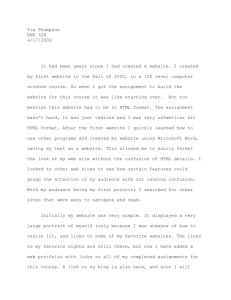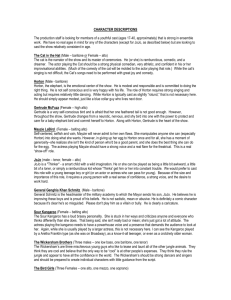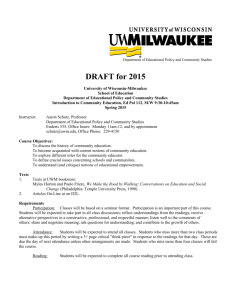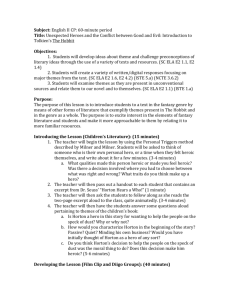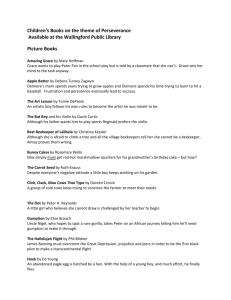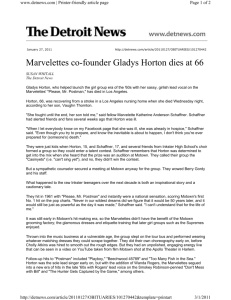Horton Technique Growing up in the 1930's Black History Timeline
advertisement
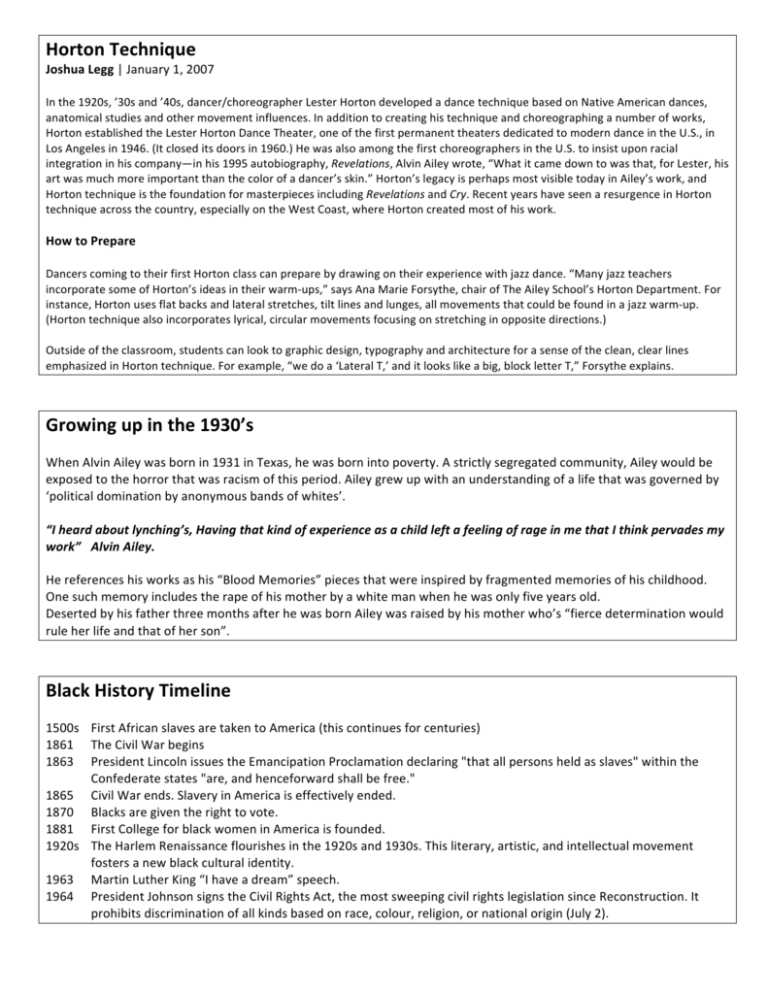
Horton Technique Joshua Legg | January 1, 2007 In the 1920s, ’30s and ’40s, dancer/choreographer Lester Horton developed a dance technique based on Native American dances, anatomical studies and other movement influences. In addition to creating his technique and choreographing a number of works, Horton established the Lester Horton Dance Theater, one of the first permanent theaters dedicated to modern dance in the U.S., in Los Angeles in 1946. (It closed its doors in 1960.) He was also among the first choreographers in the U.S. to insist upon racial integration in his company—in his 1995 autobiography, Revelations, Alvin Ailey wrote, “What it came down to was that, for Lester, his art was much more important than the color of a dancer’s skin.” Horton’s legacy is perhaps most visible today in Ailey’s work, and Horton technique is the foundation for masterpieces including Revelations and Cry. Recent years have seen a resurgence in Horton technique across the country, especially on the West Coast, where Horton created most of his work. How to Prepare Dancers coming to their first Horton class can prepare by drawing on their experience with jazz dance. “Many jazz teachers incorporate some of Horton’s ideas in their warm-­‐ups,” says Ana Marie Forsythe, chair of The Ailey School’s Horton Department. For instance, Horton uses flat backs and lateral stretches, tilt lines and lunges, all movements that could be found in a jazz warm-­‐up. (Horton technique also incorporates lyrical, circular movements focusing on stretching in opposite directions.) Outside of the classroom, students can look to graphic design, typography and architecture for a sense of the clean, clear lines emphasized in Horton technique. For example, “we do a ‘Lateral T,’ and it looks like a big, block letter T,” Forsythe explains. Growing up in the 1930’s When Alvin Ailey was born in 1931 in Texas, he was born into poverty. A strictly segregated community, Ailey would be exposed to the horror that was racism of this period. Ailey grew up with an understanding of a life that was governed by ‘political domination by anonymous bands of whites’. “I heard about lynching’s, Having that kind of experience as a child left a feeling of rage in me that I think pervades my work” Alvin Ailey. He references his works as his “Blood Memories” pieces that were inspired by fragmented memories of his childhood. One such memory includes the rape of his mother by a white man when he was only five years old. Deserted by his father three months after he was born Ailey was raised by his mother who’s “fierce determination would rule her life and that of her son”. Black History Timeline 1500s First African slaves are taken to America (this continues for centuries) 1861 The Civil War begins 1863 President Lincoln issues the Emancipation Proclamation declaring "that all persons held as slaves" within the Confederate states "are, and henceforward shall be free." 1865 Civil War ends. Slavery in America is effectively ended. 1870 Blacks are given the right to vote. 1881 First College for black women in America is founded. 1920s The Harlem Renaissance flourishes in the 1920s and 1930s. This literary, artistic, and intellectual movement fosters a new black cultural identity. 1963 Martin Luther King “I have a dream” speech. 1964 President Johnson signs the Civil Rights Act, the most sweeping civil rights legislation since Reconstruction. It prohibits discrimination of all kinds based on race, colour, religion, or national origin (July 2).
